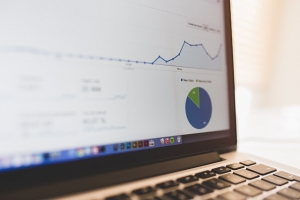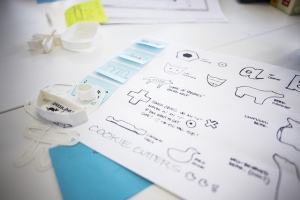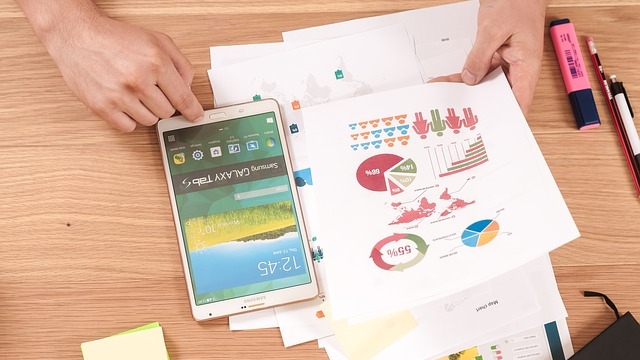The Internet has undoubtedly changed the way we consume information. We head online or reach for our smartphones to find news and facts and we expect to be able to digest things quickly and easily when we do. With this in mind, it’s perhaps not surprising that the word “infographic” now returns about 59,700,000 results on Google.
Carrying out a Google image search with infographic as your keyword, checking the term out on Pinterest or exploring the category on Visual.y is a good way to lose a few hours. Infographics can be incredibly visually appealing and great learning tools, but is an infographic a tactic you should employ to boost your website’s visibility? We look at the whens and what fors of infographic buying to help you decide if you need to make data visualisation part of your search marketing mix.
What are the SEO benefits of infographics?
 It’s the shareability of infographics that makes them a great SEO tool and as the perfect marriage between data and creativity; they are a natural choice for use within SEO. When brands first started using infographics as a way to attract attention and earn links, infographics were often bundled in with “linkbait” but they are capable of much more. The astonishing growth of the infographic can be seen in a simple Google trends graph and they’re still very much in demand. A good well thought out and well-timed infographic can earn links to your site that you may not otherwise be able to access and many of those links might result in traffic too.
It’s the shareability of infographics that makes them a great SEO tool and as the perfect marriage between data and creativity; they are a natural choice for use within SEO. When brands first started using infographics as a way to attract attention and earn links, infographics were often bundled in with “linkbait” but they are capable of much more. The astonishing growth of the infographic can be seen in a simple Google trends graph and they’re still very much in demand. A good well thought out and well-timed infographic can earn links to your site that you may not otherwise be able to access and many of those links might result in traffic too.
Are there any additional benefits?
Even if earning links is your number one reason for choosing to use infographics as a marketing tool, you shouldn’t discount the additional benefits. Firstly, if it’s placed on your site, an infographic acts as a useful resource and can answer search queries, establishing you as a trusted voice in your field. It can also be generally entertaining for your site visitors, helping to keep them on site longer.
With outreach and promotion, an infographic can put your brand in front of your target audience and extend your reach – introducing you to potential new customers. Even without a link, a mention of your infographic on a publication or blog can help make a buzz and drive traffic through valuable online exposure, which would cost you a fortune in the PR world! Infographics are also a great complement to social media marketing and while Google have said they don’t currently use social signals as a ranking factor, having your content shared and linked to via social media can be no bad thing.
Finally, infographics can and should be used as part of larger campaigns – targeting specific sites that might not be interested in a straight news story or press release, who may want something a little bit juicier to share with their audience.
What types of businesses should use infographics
Infographics are being used equally well in B2B and B2C marketing and operating within a niche industry isn’t necessarily a hindrance. In fact, it can mean you have more interesting information to share and fewer content competitors. What’s more important is what you choose to share – you should be giving something new to your audience – whether it’s your own data or a collection of interesting information on a related topic. Whichever path you go down you will need to be careful not to turn your infographic into an advert because there are very few people who will be willing to share advertising for you! Infographic design is about striking the right balance between relevant (to you and your audience) and interesting, while also taking into account other important factors like copyright, industry events and editorial calendars.
When and how should you use an infographic?
 You might choose to factor infographics into a longer-term content marketing campaign or to invest in an infographic when you have the results of a poll or other valuable information to release. It may be that a piece chock full of facts isn’t right for your brand and you opt for an instructographic that teaches people a new skill.
You might choose to factor infographics into a longer-term content marketing campaign or to invest in an infographic when you have the results of a poll or other valuable information to release. It may be that a piece chock full of facts isn’t right for your brand and you opt for an instructographic that teaches people a new skill.
Knowing when and how to outreach your infographic is critical – you could coincide publication with the release of some related legislation or government statistics or in the aftermath of an industry conference. Alternatively, you can work in reverse – taking a relevant current topic, finding a suitable angle and turning it into an infographic fast enough to be included in the coverage. As a starting point, we think about what unique information or insight you have at your disposal.
As big fans of infographics, you might think we’re a little bit biased but we know that infographics are not always the answer and we’ll happily suggest other content marketing strategies if we don’t belief an infographic is the right approach for your site at a particular time. For example, if your site has recently been hit with a penalty or has a lot of technical issues that need dealt with first, we might suggest perfectly planning an infographic campaign in the background to launch once the basics have been battled.
How much do infographics cost to produce?
The best infographics are a result of thorough research alongside excellent design. However, the work doesn’t stop there – our own process for infographics is a six step one that spans ideation through to promotion. When you’re approaching top publications and blogs you want to feel confident your content is up to scratch, which means a solid investment. Our infographics can be added directly into your search campaign or work as part of a content marketing strategy.
An infographic might be your content marketing or just one strand of a content marketing campaign that targets one segment of your audience, using the data or story available in a particular way that’s suited to them. To start exploring how you could use infographics as a catalyst for your online visibility, get in touch with one of our friendly team today or visit our Infographic Design and Promotion Page here.

